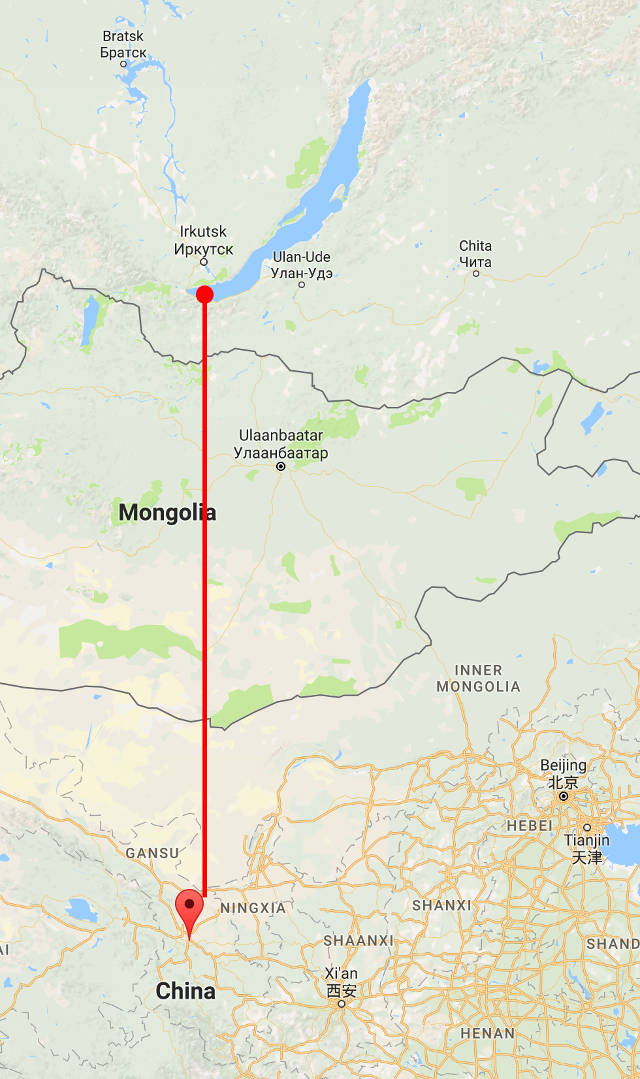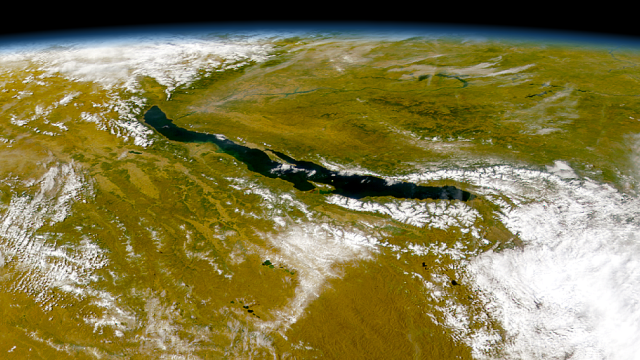The northwest Chinese city of Lanzhou has a serious water shortage problem. To address the issue, its urban planners have sketched out an ambitious plan to deliver water from Siberia’s Lake Baikal to the city along a 1000km-long pipeline. Getting approval for the project will be a monumental challenge, but it may be a sign of things to come for other water-poor regions of the world.
Lake Baikal, the largest freshwater lake in the world by volume. (Image: BDK)
As history has shown, China has a soft spot for mega projects, whether it be the construction of the Great Wall of China or the colossal Three Gorges Dam. The latest proposal, devised by the Lanzhou Urban and Rural Planning and Design Institute, calls for a similarly ambitious project, one connecting the southern tip of Lake Baikal in Siberia to the drought-stricken Gansu region in northwest China.

Lake Baikal is the largest freshwater lake in the world by volume, containing roughly 20 per cent of the world’s unfrozen surface water. The pipeline would extend for 1000km along the Hexi Corridor, a desert region that runs between the Tibetan Plateau and the Gobi Desert. The pipeline would cut a swath straight through Mongolia.
The Lanzhou planners say the chronic water shortage is stunting the region, which experienced just 380mm of rain last year.
“The pipeline will boost the utilization rate and business prospects of [Gansu province], improve the ecological environment of Northwest China, and promote Lanzhou’s economic growth,” the authors wrote in the proposal, titled “Vision for Urban Planning 2030”.
The proposal is calling attention to China’s ongoing water shortages. The country has 20 per cent of the world’s population, but only seven per cent of its fresh water. Back in 2005, China’s former minister of water resources warned that many northern cities, including Lanzhou, would run out of water by 2020.
Unsurprisingly, the Lanzhou plan has been met with criticism. Some are questioning the feasibility of the plan, citing the tremendous costs involved, and the difficulties of coordinating the countries and local jurisdictions involved.
“To declare the global plans of the transfer of fresh water to China, without detailed calculations, is total folly,” noted environmentalist and economist Viktor Danilov-Danilyan told the Siberian Times. “It would require big funds and the price of the water will be very high. Almost certainly this project is simply unprofitable.”
That said, Russia may be willing to entertain the idea. A year ago, Russia’s agriculture minister proposed a similar pipeline between Kazakhstan and Xinjiang, saying it would only happen “under the condition of full compliance with the interests of Russia, including environmental.” The Russian petro-state — that is, a country with an economy largely driven by its oil and gas interests — with its abundance of fresh water, may be willing to capitalise on its commodities even further, becoming the world’s first hydro-state.
“Water is the same resource as oil, gas, gold, and sooner or later we will start to sell it,” noted Stepan Svartsev from Tomsk State University in the Guardian. “Our country has very large reserves and certain volumes could be sold.”
In addition to the political and diplomatic hurdles, there’s also the environment to consider. An environmental impact assessment would have to be conducted along the 1000km corridor. The effects of the pipeline on Lake Baikal would also have to be addressed. This source of fresh water is a haven for 1200 animal species and 600 types of plants, of which half are local to the region.
It’s also important to point out that Lake Baikal is already facing severe environmental problems. Once prized for its crystal clean water, scientists say its southern-most areas have become inundated with algae, making it unsafe to drink. Surface runoff of nutrients into the lake, plus warming conditions, are allowing the algae to thrive. Adding insult to injury, water levels have dropped in recent years, and residents near the lake have already been told to cut down on water usage.
Certainly, it will be interesting to see how this story plays out. The proposal from Lanzhou may be rejected, but that doesn’t mean other pipeline plans won’t work out, both in China and abroad.
The United States and Canada should take notice, particularly considering water shortages in the south — especially in California and Nevada — and the grim prospect of decades-long megadroughts. Eventually, the two countries may have to start negotiations about sharing water and building pipelines.
Or more practically, we should push for industrial-scale desalination. Approximately 97 per cent of the world’s water is tied up in our oceans, but we can’t drink it. Should gains in solar power efficiency continue, we should start to see the first large-scale desalination plants appear by the 2030s.
